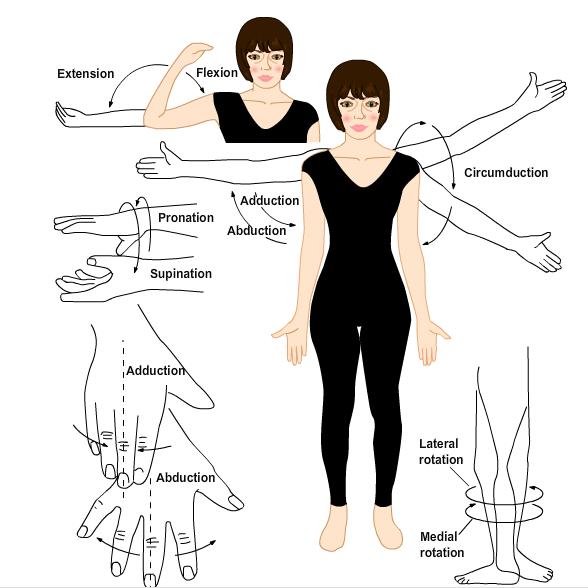Range of movement (ROM)
Assessing passive joint range of movement is important as many people (and particularly older patients) suffer stiffness and loss of joint range through previous injury or other musculoskeletal problems. This may have implications for the rehabilitation strategies which may be attempted.
Limbs should be handled carefully, slowly and only moved within normal anatomical range. Particular care must be taken when moving the limbs of patients who present with very low tone and with a lack of sensation. Generally it is not necessary to measure the exact ROM in all joints, but commonly an estimate of the extent of the lack of movement is made i.e. half or quarter range.

Active movement/power
Describe the patterns of active i.e. voluntary movement available on the affected side. Some use the Oxford (MRC) Scale:
- 0 No movement
- 1 Flickers of movement
- 2 Movement but only with gravity counterbalanced
- 3 Movement against gravity
- 4 Movement against resistance
- 5 Normal movement
Wade, D.T. 1992. Measurement in neurological rehabilitation. Oxford University Press.
Page last reviewed: 01 Feb 2021


